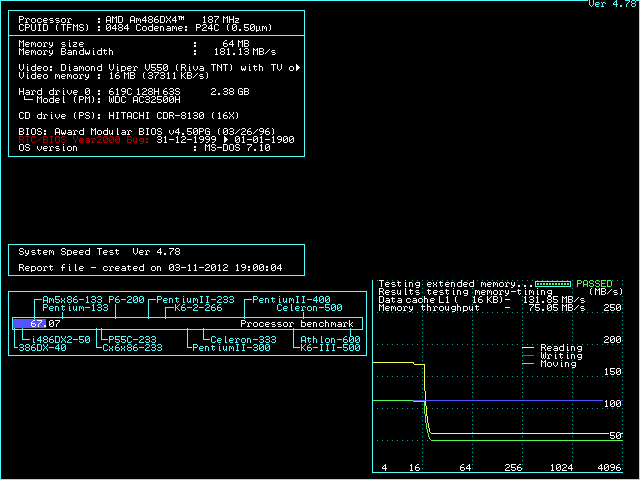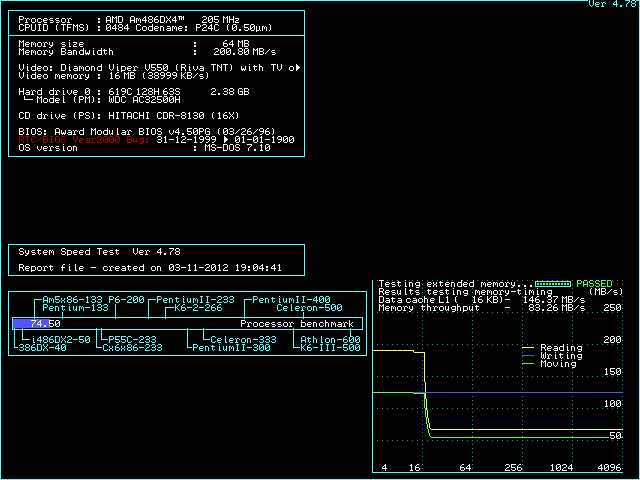First post, by numeriK
If you've dabbled in the realm of 486's you know that certain AMD 5x86 Socket 3 processors can reach 200MHz, for the most part pretty stable.
Usually the most unstable thing is the RAM, the Cache, or most/all busses on your motherboard completely crapping out due to - more often than not - overclocking too much without a combination of increasing voltage and decreasing timings.
First off, I grew up on modifying, tweaking, and overclocking 486's through present-day chipsets and CPU's. Through the years I've sold or fried countless hardware (yee-haw!). I enjoy pushing hardware to it's limit - an old hobby that won't die.
That said, I've recently picked up a PC Chips M919 v1.5 w/ AMD 5x86 133MHz CPU. I've been tinkering with it quite a bit, other posts on the Marvin board show what I've done with it thus far.
In all of my testing, I'm hitting a glass ceiling at a "certain speeds" - and I'm thinking that, for once, the CPU is the limiting factor (not the RAM, cache, timing, or bus speeds).
This "certain speed" is the theoretical 60MHz x 4 (~233MHz, closer to 240MHz) and 66MHz x 4 (~266MHz) settings for the CPU.
I've already run, with some stability:
66MHz x 3 = ~205MHz
... and I run this 24/7, in Windows 98SE:
60MHz x 3 = ~187MHz
However, the only multiple of 4 that I can get working is for the 50MHz FSB and lower (50MHz x 4). 60MHz and 66MHz won't POST. Voltages are cranked all the way up, timing is decreased - have I hit the AMD 5x86 "glass ceiling"? Are there certain steppings that are better for OC'ing? Can I solder a resistor or bypass a regulator that's limiting the 5V to the CPU?
Has anyone ever successfully ran one of these well past 200MHz?
More specifically, attempt the (60MHz x 4) or (66MHz x 4) options?
... or am I just crazy? 😎 😁
Many thanks in advance!
8433UUD v2 | AMD 5x86 @ 180MHz (60MHz x 3, 30MHz PCI) | 64MB EDO | TNT 16MB PCI | SB AWE64 ISA | Win98SE


